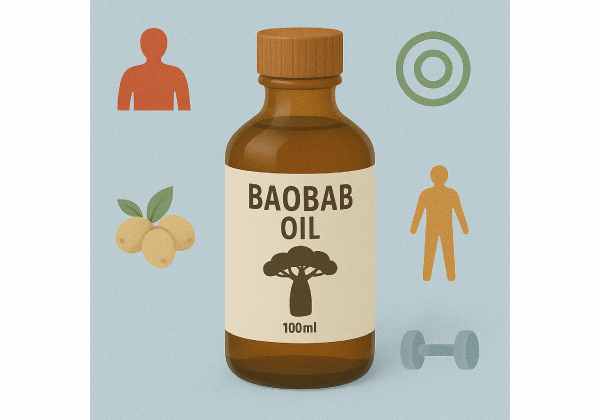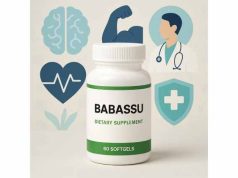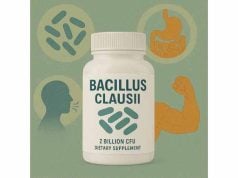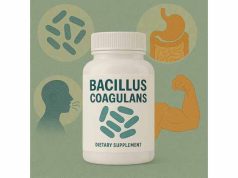Did you know a single drop of baobab oil contains over six times more vitamin C than an orange? This exotic, nutrient-rich oil has gained global attention for its unique blend of antioxidants, vitamins, and essential fatty acids—making it a rising star in natural wellness and beauty routines. Baobab oil offers a silky, lightweight texture, absorbs rapidly, and delivers powerful moisturization without clogging pores, making it suitable for nearly every skin type. Backed by emerging research, it’s now prized for supporting skin health, hair nourishment, and even wound healing. In this article, you’ll discover how baobab oil works, its top evidence-based benefits, proper usage and dosage, potential side effects, and answers to common questions, empowering you to safely make the most of this remarkable African superfood.
Key Takeaways
- Baobab oil is a nutrient-rich extract from the seeds of the African baobab tree, loaded with antioxidants and essential fatty acids.
- Its main uses include moisturizing skin and hair, reducing inflammation, and supporting wound healing.
- Generally considered safe for topical use with rare side effects, but always patch-test before first use.
- There’s no universal dosage—use a few drops as needed for skin or hair, and consult a professional for oral supplementation.
- Baobab oil is non-comedogenic, lightweight, and suitable for sensitive skin, making it a versatile addition to wellness routines.
Table of Contents
- What is Baobab Oil and How Does It Work?
- The Science Behind Baobab Oil: Biology and Mechanism of Action
- Top Benefits of Baobab Oil: Proven Uses for Skin, Hair, and Health
- Baobab Oil Safety: Side Effects and Potential Interactions
- How to Use Baobab Oil: Dosage Recommendations and Application Tips
- Frequently Asked Questions About Baobab Oil
What is Baobab Oil and How Does It Work?
Baobab oil is an amber-hued, lightweight oil cold-pressed from the seeds of the baobab tree (Adansonia digitata), a legendary symbol of resilience and life in sub-Saharan Africa. Nicknamed the “tree of life,” the baobab can live for thousands of years and thrives in some of the planet’s harshest climates, storing vast reserves of water and nutrients in its thick trunk. The fruit—often called “monkey bread”—contains seeds rich in nourishing oils that have been used for generations in African skincare, haircare, and traditional healing.
Composition and Unique Properties
What sets baobab oil apart is its impressive nutritional profile. It is loaded with:
- Essential fatty acids: High levels of oleic acid (omega-9), linoleic acid (omega-6), and palmitic acid support skin barrier function and help retain moisture.
- Vitamins: Especially vitamin E (tocopherol), an antioxidant that protects skin cells from free radical damage.
- Phytosterols and polyphenols: Plant compounds that help calm inflammation and promote overall skin health.
- Vitamin C: Rare in oils, but baobab oil retains some, supporting collagen production and skin elasticity.
The oil is renowned for its non-comedogenic (won’t clog pores) properties, rapid absorption, and silky texture. It leaves skin soft without feeling greasy, making it a popular base in high-end serums, facial oils, hair treatments, and body care products.
Traditional and Modern Uses
Historically, African communities have used baobab oil for:
- Soothing dry, cracked skin and lips
- Massaging sore muscles and joints
- Conditioning hair and scalp to reduce dryness and flakiness
- Minor wound care, including cuts, burns, and insect bites
Modern cosmetic science has amplified these uses, with clinical testing supporting many of the traditional claims.
How It Works
Baobab oil’s effects stem from its balanced fatty acid composition and natural antioxidants. When applied to skin, the oil forms a protective barrier that locks in moisture and shields against environmental stressors. The antioxidants, such as vitamin E and polyphenols, help neutralize damaging free radicals (unstable molecules that contribute to aging and inflammation).
Additionally, baobab oil’s fatty acids can help repair the skin’s natural lipid layer, essential for retaining hydration and protecting against irritants. Its gentle, soothing nature makes it ideal for sensitive, mature, or damaged skin.
Physical Characteristics
- Color: Light yellow to golden amber
- Odor: Mild, nutty, and slightly earthy
- Texture: Silky, smooth, and easily spreadable
- Stability: Naturally resistant to oxidation, giving it a longer shelf life compared to many other plant oils
Because of its versatility, baobab oil is increasingly found in moisturizers, serums, cleansers, hair conditioners, beard oils, and even baby care products.
Baobab Oil in the Global Market
Interest in baobab oil has surged, especially in natural beauty and wellness sectors. It’s often featured as a premium “hero ingredient” due to its purity, sustainability, and impressive benefits. Many brands highlight its ethical sourcing and support for African communities, as fair-trade practices are becoming a key value for consumers.
Summary
In essence, baobab oil is a multitasking natural oil, prized for its remarkable ability to hydrate, protect, and restore skin and hair—offering gentle care for all ages and types.
The Science Behind Baobab Oil: Biology and Mechanism of Action
Understanding how baobab oil actually works on a cellular level reveals why this ancient oil has such wide-ranging benefits. The secret lies in its synergy of essential fatty acids, antioxidants, and micronutrients, all of which interact with our skin and hair in targeted, science-backed ways.
Fatty Acid Balance and Skin Barrier Function
Baobab oil’s composition is a harmonious blend of fatty acids:
- Oleic Acid (Omega-9): Makes up roughly 30-40% of the oil. This monounsaturated fat deeply penetrates the skin, providing long-lasting hydration without leaving a heavy residue.
- Linoleic Acid (Omega-6): Approximately 24-34%. This essential polyunsaturated fat is vital for maintaining the skin’s natural barrier, helping reduce water loss and improve texture.
- Palmitic Acid: 18-30%. Adds a protective, emollient quality, leaving skin feeling soft and smooth.
Healthy skin relies on a strong lipid barrier to lock in moisture and block out irritants. Baobab oil, when applied topically, reinforces this barrier—particularly for people with dry, sensitive, or aging skin. Studies show that oils rich in linoleic acid can actually help reduce acne by keeping sebum (skin oil) flowing freely and preventing pore blockages.
Antioxidant Action: Vitamin E and Polyphenols
Free radicals—unstable molecules from UV rays, pollution, and stress—can damage skin cells, accelerate aging, and cause inflammation. Baobab oil naturally contains:
- Vitamin E (Tocopherols): Potent antioxidant that scavenges free radicals, protecting skin cells from damage and supporting repair.
- Polyphenols and Phytosterols: These plant-derived compounds calm inflammation, reduce redness, and promote healing, making baobab oil especially beneficial for irritated or compromised skin.
Some research suggests that vitamin E in baobab oil is particularly bioavailable, meaning your skin can absorb and use it efficiently.
Vitamin C: Collagen Support and Brightening
Most oils don’t retain vitamin C, but baobab oil is unique. While the concentration is lower than in fresh fruit, its presence still contributes to collagen synthesis (the protein that keeps skin firm and youthful) and supports overall skin health and brightness.
Non-Comedogenic Profile
Unlike heavier plant oils (such as coconut or wheat germ oil), baobab oil is non-comedogenic, meaning it won’t clog pores or exacerbate acne. Its lightweight, “dry oil” finish makes it an ideal daily moisturizer for both oily and dry skin types.
Wound Healing and Anti-Inflammatory Effects
A growing body of research supports baobab oil’s role in wound healing. Its fatty acids and plant sterols reduce inflammation, promote cell regeneration, and create an optimal environment for repair. Traditional African medicine has long used the oil on minor burns, cuts, and bug bites—modern studies now confirm its efficacy in accelerating healing and minimizing scarring.
Hair and Scalp Health
On the scalp and hair, baobab oil:
- Penetrates the hair shaft, delivering nutrients that increase elasticity and shine
- Moisturizes the scalp, reducing dryness, itchiness, and dandruff
- Helps detangle and smooth frizz, especially for curly or textured hair
Absorption and Sensory Qualities
Baobab oil is a “dry oil,” meaning it absorbs quickly and leaves little to no greasy residue. This makes it particularly comfortable for leave-on applications and layering with other products.
Stability and Shelf Life
Unlike many natural oils that go rancid quickly, baobab oil’s stable structure means it resists oxidation, extending its shelf life to 18–24 months when stored properly.
Summary Table: Key Scientific Properties of Baobab Oil
| Component | Role/Effect |
|---|---|
| Oleic acid | Deep hydration, skin penetration |
| Linoleic acid | Skin barrier support, acne reduction |
| Palmitic acid | Softens, smooths, protects skin |
| Vitamin E | Antioxidant, cell repair, anti-aging |
| Polyphenols | Anti-inflammatory, soothing |
| Vitamin C | Collagen production, skin brightening |
Takeaway
Baobab oil’s biological effects are a result of its well-balanced, natural chemistry—a blend that both science and tradition have found to be gentle, effective, and remarkably versatile.
Top Benefits of Baobab Oil: Proven Uses for Skin, Hair, and Health
Baobab oil’s reputation as a “miracle oil” is supported by a growing number of studies and centuries of real-world use. Its versatile benefits extend well beyond simple moisturization, offering targeted solutions for common skin, hair, and wellness concerns.
1. Deep Hydration and Moisture Retention
Baobab oil acts as a powerful natural moisturizer. Its unique fatty acid balance allows it to both penetrate the skin deeply and form a protective barrier on the surface. Unlike heavier oils, it won’t clog pores or leave a greasy after-feel, making it ideal for daily use on the face, hands, and body.
- For dry skin, baobab oil delivers instant and lasting relief, helping to soothe flakiness, tightness, and irritation.
- Those with eczema or dermatitis may find the oil calms redness and itchiness, though it’s always best to consult a dermatologist before using new products on inflamed skin.
2. Supports Skin Barrier and Accelerates Healing
The integrity of the skin’s barrier is crucial for protection against environmental aggressors. Baobab oil’s high linoleic acid content supports the repair of this barrier, reducing water loss and promoting faster healing of minor wounds, cuts, and abrasions.
- Research shows that baobab oil can enhance wound closure and decrease the risk of scarring, thanks to its blend of fatty acids and anti-inflammatory phytosterols.
- It’s often used in after-sun care and in serums designed to support skin recovery post-procedure (like microdermabrasion or chemical peels).
3. Potent Anti-Aging and Antioxidant Effects
The natural antioxidants in baobab oil, especially vitamin E and polyphenols, fight oxidative stress—one of the main drivers of visible skin aging.
- Regular use can help fade fine lines, improve elasticity, and give skin a smoother, more radiant appearance.
- Its antioxidant content makes it a smart addition to any anti-aging routine, especially for those exposed to pollution or sunlight.
4. Calm Inflammation and Soothe Sensitive Skin
People with sensitive or reactive skin types are often limited in the products they can safely use. Baobab oil is gentle, hypoallergenic, and free from synthetic additives or fragrances.
- Its anti-inflammatory plant sterols help reduce redness and swelling, making it suitable for those with rosacea, psoriasis, or chronic sensitivity.
- Can be used to soothe insect bites, rashes, and post-shave irritation.
5. Boosts Hair Health and Scalp Comfort
Baobab oil works wonders as a natural hair treatment, especially for dry, brittle, or textured hair.
- As a pre-shampoo mask or leave-in treatment, it hydrates strands, reduces breakage, and restores shine.
- Massaged into the scalp, it helps alleviate dryness, flaking, and itching, supporting a healthy scalp microbiome.
- Curly-haired individuals appreciate its ability to define curls and tame frizz without weighing hair down.
6. Strengthens Nails and Softens Cuticles
Rubbing a drop of baobab oil into nails and cuticles can strengthen brittle nails and promote smoother, more supple skin around the nail bed.
7. May Aid in Stretch Mark Prevention
Anecdotal reports and early studies suggest that baobab oil’s high vitamin E and fatty acid content may help improve skin elasticity and minimize the appearance of stretch marks, particularly during pregnancy or weight changes.
8. Culinary and Wellness Uses (Caution Required)
While most baobab oil is used topically, some people use food-grade baobab oil as a nutritional supplement. It’s rich in healthy fats and plant sterols, but always consult a healthcare provider before ingesting any oil, especially if you have allergies or medical conditions.
Real-World User Experiences
Many people report visible improvements in skin hydration and texture after just a few days of use. Common praise includes how quickly it absorbs, its non-greasy feel, and how it leaves skin feeling velvety and plump. Hair users love its lightweight, non-sticky finish that doesn’t leave hair limp or oily.
Summary Table: Baobab Oil’s Top Uses
| Use | How to Apply | Expected Benefit |
|---|---|---|
| Facial moisturizer | 2-4 drops on clean skin | Hydration, anti-aging |
| Hair treatment | Apply to damp hair | Shine, manageability, scalp comfort |
| Cuticle/nail care | Massage in daily | Stronger nails, soft cuticles |
| Scar/stretch mark support | Rub gently into area | Improved elasticity, reduced marks |
| After-sun or soothing treatment | Smooth over affected area | Calms irritation, supports healing |
Who Should Try Baobab Oil?
- Those with dry, mature, or sensitive skin
- Anyone seeking a lightweight, natural oil for face or hair
- People with scalp issues or brittle hair
- Parents looking for gentle, baby-safe skin care (always do a patch test first)
Limitations and Considerations
While baobab oil offers impressive benefits, it’s not a cure-all. Individuals with known allergies to baobab or tree nuts should avoid it, and results may vary based on skin type, genetics, and consistency of use.
Baobab Oil Safety: Side Effects and Potential Interactions
One of the standout qualities of baobab oil is its reputation for being gentle and well-tolerated by most people. Still, understanding its safety profile is essential for anyone considering adding this powerful oil to their daily skincare, haircare, or wellness routine.
General Safety Overview
Baobab oil is considered non-toxic, hypoallergenic, and safe for topical use on the skin and hair. Unlike some plant-based oils that can clog pores or trigger reactions, baobab oil’s unique composition—rich in omega fatty acids, vitamins, and plant sterols—makes it less likely to cause irritation or breakouts. It’s often recommended for sensitive, dry, or mature skin and is found in many natural baby-care products due to its gentle nature.
Possible Side Effects
While rare, any new skincare ingredient can cause side effects in certain individuals, especially those with allergies or highly sensitive skin. The most commonly reported issues include:
- Mild irritation: Redness, itching, or a slight burning sensation, particularly if you have pre-existing skin conditions or open wounds.
- Contact dermatitis: Uncommon, but may occur in individuals with sensitivities to tree nuts or specific plant compounds.
These effects are generally mild and subside quickly after discontinuation. To minimize risk, always conduct a patch test before first use: apply a small amount to the inside of your wrist or elbow and monitor for any reaction over 24 hours.
Allergic Reactions
Severe allergic reactions to baobab oil are extremely uncommon, but possible—especially for those with known tree nut or seed allergies. Symptoms could include swelling, hives, or in very rare cases, difficulty breathing. Discontinue use immediately and seek medical attention if any of these occur.
Internal (Oral) Use Safety
Most baobab oil on the market is intended for topical (external) use only. While some food-grade baobab oil exists, ingesting it without medical supervision is not advised due to limited research on internal safety and dosing. Possible risks of oral consumption include:
- Gastrointestinal discomfort
- Allergic reactions
- Interactions with medications or supplements
If you are considering baobab oil as a dietary supplement, always consult your healthcare provider to assess whether it’s appropriate for your needs.
Potential Drug and Product Interactions
Currently, there are no widely documented drug interactions associated with topical baobab oil. However, some points to keep in mind:
- Concurrent use with active ingredients: If you are using prescription skin medications (like retinoids or topical steroids), apply baobab oil at a different time to prevent dilution or interference.
- Mixing with essential oils: Baobab oil is often used as a carrier oil for essential oils. Use caution and follow safe dilution guidelines, as some essential oils can cause irritation or increase skin sensitivity.
Precautions for Special Populations
- Pregnant or breastfeeding women: Baobab oil is generally considered safe for topical use during pregnancy and on infants’ skin, but always check with your healthcare provider before adding any new product, especially if you have allergies or health conditions.
- Infants and children: The gentle nature of baobab oil makes it suitable for delicate baby skin; still, always patch-test and use only pure, additive-free oil.
Storage and Stability
Proper storage of baobab oil ensures its safety and effectiveness:
- Keep in a cool, dark place away from direct sunlight
- Tightly seal the bottle to prevent oxidation
- Use within 18–24 months for best quality
Spoiled or rancid oil may smell off and should not be used on skin or hair.
Signs of Spoilage
- Cloudiness or separation
- Unpleasant, sour, or sharp odor
- Change in color or texture
Sustainability and Sourcing Concerns
With the rise in global popularity, ethical sourcing of baobab oil has become a concern. Opt for oils that are:
- Certified organic and cold-pressed
- Sourced from fair-trade cooperatives or reputable suppliers
- Free from synthetic additives, fragrances, or fillers
Supporting sustainably harvested baobab oil not only protects your skin but also benefits African communities and ecosystems.
Summary Table: Baobab Oil Safety Overview
| Aspect | Details/Advice |
|---|---|
| Topical use | Safe for most skin and hair types |
| Oral consumption | Only with medical supervision |
| Allergy risk | Low, but possible with seed/tree nut sensitivities |
| Pregnancy/infants | Generally safe, patch-test and consult doctor |
| Storage | Cool, dark place; 18–24 month shelf life |
Final Takeaway on Safety
Baobab oil is among the safest natural oils for skin and hair, with side effects being rare and usually mild. Prioritize pure, ethically sourced oils and always patch-test new products to enjoy baobab oil’s full benefits with peace of mind.
How to Use Baobab Oil: Dosage Recommendations and Application Tips
Harnessing the full potential of baobab oil depends on how—and how much—you use. Because this oil is incredibly versatile, you’ll find a variety of effective application methods and a few simple best practices to maximize results.
Choosing the Right Baobab Oil
For skincare and haircare, select a cold-pressed, unrefined, 100% pure baobab oil. This ensures the nutrients remain intact and the oil is free from additives, fragrances, or preservatives.
General Dosage and Application Guidelines
There is no standardized dosage for baobab oil, as needs vary by individual and intended use. Below are practical recommendations for safe, effective use:
For Skin
Daily Facial Moisturizer
- After cleansing, place 2–4 drops of baobab oil in your palm.
- Gently warm the oil between your hands and press it onto damp face and neck.
- Use alone or layer under your regular moisturizer or sunscreen.
Targeted Skin Treatment
- Apply a drop directly to dry patches, rough elbows, cuticles, or stretch marks.
- Massage in gently until absorbed.
- Use twice daily for optimal results.
Serum Booster
- Add 1–2 drops to your favorite serum or moisturizer for an added nutrient boost.
Makeup Removal
- Massage a few drops onto your face to dissolve makeup.
- Wipe away with a warm, damp cloth, then follow with your usual cleanser.
For Hair
Pre-Shampoo Treatment (Hot Oil Mask)
- Warm 1–2 teaspoons of baobab oil between your palms.
- Massage thoroughly into scalp and hair, concentrating on dry ends.
- Leave on for 20–30 minutes (wrap hair in a towel or shower cap for deeper absorption).
- Shampoo and condition as usual.
Leave-In Conditioner
- Rub 1–3 drops between your fingers and smooth over damp or dry hair, focusing on ends.
- Style as normal. Avoid applying too much to roots to prevent oiliness.
Scalp Massage
- Apply a few drops directly to the scalp.
- Massage gently to hydrate, soothe itching, and support scalp health.
For Body
All-Over Moisturizer
- After bathing, apply a generous amount to damp skin.
- Massage in circular motions until absorbed.
Soothing Balm for Minor Irritations
- Dab oil onto sunburn, insect bites, or mild rashes for calming relief.
For Nails and Cuticles
- Massage 1 drop into each nail and cuticle daily to strengthen and hydrate.
Combining with Other Oils and Ingredients
- Baobab oil works well as a carrier for essential oils (dilute according to safety guidelines).
- Can be mixed with other plant oils (like jojoba, argan, or rosehip) for customized blends.
Internal Use and Dosage
- If using food-grade baobab oil as a supplement, consult a healthcare provider first.
- Typical oral dosages range from 0.5–1 teaspoon per day, but scientific data is limited and safety must be confirmed.
Tips for Maximizing Benefits
- Always apply to slightly damp skin or hair for best absorption.
- Start with a small amount and increase as needed—baobab oil is very concentrated.
- Store away from direct light and heat to preserve quality.
- For sensitive skin, always patch-test before full application.
Signs You’re Using Too Much
- Oily or greasy residue that doesn’t absorb
- Hair appears limp or heavy
- Skin feels congested or develops breakouts (rare, but possible)
Summary Table: Practical Baobab Oil Dosage
| Use | Amount | Frequency | How to Apply |
|---|---|---|---|
| Face moisturizer | 2–4 drops | 1–2x daily | After cleansing, damp skin |
| Hair treatment | 1–2 tsp (mask) | 1–2x weekly | Scalp/hair, rinse out |
| Leave-in conditioner | 1–3 drops | As needed | Focus on ends, style |
| Body moisturizer | Quarter-size dollop | Daily | Post-shower, damp skin |
| Nail/cuticle care | 1 drop/nail | Daily | Massage into nail/cuticle |
Cautions
- Not all baobab oil is safe for internal use—read labels carefully.
- Avoid using on open wounds without medical guidance.
By tailoring your use to your unique needs, baobab oil can become a daily staple for glowing skin, healthy hair, and strong nails.
Frequently Asked Questions About Baobab Oil
How do you use baobab oil on your face?
Apply 2–4 drops to clean, slightly damp skin after cleansing. Gently press the oil into your face and neck, either alone or mixed with your regular moisturizer for added hydration and softness.
Is baobab oil safe for sensitive or acne-prone skin?
Yes, baobab oil is non-comedogenic and generally safe for sensitive or acne-prone skin. It helps balance moisture without clogging pores and may even calm redness or inflammation.
Can you use baobab oil on your hair and scalp?
Absolutely. Massage a small amount into the scalp to relieve dryness, or apply to hair strands as a leave-in conditioner or deep treatment to boost shine, reduce breakage, and tame frizz.
Does baobab oil help with scars or stretch marks?
Baobab oil’s high vitamin E and fatty acid content may improve skin elasticity and reduce the appearance of scars or stretch marks with regular, consistent use, although individual results vary.
Is baobab oil edible or safe to ingest?
Only food-grade baobab oil should be consumed, and even then, consult a healthcare professional before taking it internally. Most baobab oil sold for beauty use is for topical application only.
What does baobab oil smell like?
Baobab oil has a mild, nutty, slightly earthy aroma that fades quickly after application and does not linger or overpower.
How should baobab oil be stored for maximum freshness?
Store in a cool, dark place, tightly sealed. Baobab oil is naturally resistant to oxidation and can remain fresh for up to 24 months if stored properly.
Disclaimer:
The information in this article is for educational purposes only and is not intended as a substitute for professional medical advice, diagnosis, or treatment. Always consult your healthcare provider before starting any new supplement or skincare product, especially if you have allergies, health conditions, or are pregnant or breastfeeding.
If you found this guide helpful, please consider sharing it on Facebook, X (formerly Twitter), or your favorite social media platform, and follow us for more evidence-based wellness tips. Your support helps us continue to deliver quality content—thank you for reading!

















